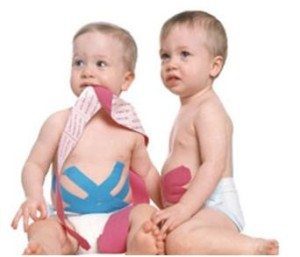Athletes
Sports Spine Specialist Chiropractic Team: Athletes strive to achieve their body’s maximum performance by participating in numerous training regimens consisting of strenuous exercises and physical activity and ensuring they meet all of their body’s nutritional requirements. Through proper fitness and nutrition, many individuals can condition themselves to excel in their specific sport. Our training programs are designed for athletes that look to gain a competitive edge in their sport.
We provide sport-specific services to help increase an athlete’s performance through mobility, strength, and endurance. Occasionally, however, the excess workouts can lead many to suffer injuries or develop underlying conditions. Dr. Alex Jimenez’s chronicle of articles for athletes displays in detail the many forms of complications affecting these professionals while focusing on the possible solutions and treatments to follow to achieve overall well-being.

by Dr Alex Jimenez DC, APRN, FNP-BC, CFMP, IFMCP | Diets, Fitness
Any marathoner will tell you that the grueling 26-mile races can do a number on the hips, knees, ankles and feet.
Now, a small study suggests that these tests of endurance are also tough on the kidneys.
“Marathon runners demonstrate transient or reverse short-term kidney injury,” said Dr. Chirag Parikh, professor of medicine at Yale University.
In his study of 22 participants in the 2015 Hartford, Conn. Marathon, Parikh found that 82 percent showed acute kidney injury after the race. In this condition, the kidneys fail to filter waste from the blood.
The good news is that the kidney injury seems to clear up within two days of the race, he said.
“On day 2, they are all fine,” Parikh said.
Runners likely don’t even know they’ve had this transient injury, Parikh said. “For the short term, I don’t think they would notice anything,” he said.
Parikh isn’t certain why the strenuous event is linked with kidney injury. But some potential causes include the sustained rise in core body temperature, dehydration, or the decreased blood flow to the kidneys that occurs during a marathon, he explained.
When the blood is pumped to the skin and muscles while running, he said, the kidneys may not get as much blood as they normally do.
Nor can Parikh say whether the effect might be cumulative, getting worse with more marathons run. It may be that the kidney adapts over time instead, he noted.
To evaluate this type of kidney injury, his team looked at blood and urine samples collected before and after the marathon. These tests included measuring blood creatinine levels and proteins in the urine, along with looking at kidney cells on a microscope. Creatinine is a waste product excreted by the kidneys; measuring it in the blood helps assess kidney health.
In a previous study, published in 2011, Dr. Peter McCullough, vice chief of medicine at Baylor University Medical Center in Dallas, and colleagues evaluated 25 men and women marathoners. They found 40 percent of the runners met the definition of acute kidney injury based on their blood creatinine levels.
In the new study, Parikh’s team also “performed an in depth evaluation of the urine and found evidence of injury,” McCullough said.
“The larger question looming is: do these repeated bouts of injury in endurance athletes lead to chronic kidney disease years later? Can anything be done about the injury at the time including hydration strategy?” McCullough said. More study is crucial, he added.
Parikh said additional research is also needed to assess whether certain people may not recover as quickly. For now, those with a family history of kidney disease should let their physician know they run marathons, he suggested.
Dr. Cathy Fieseler said marathoners who want to reduce their risk of kidney injury should avoid anti-inflammatory drugs before the race. Those drugs include over-the-counter ibuprofen (Advil, Motrin IB) and naproxen (Aleve), Fieseler said. Acetaminophen (Tylenol) is cleared through the liver.
Fieseler is a primary care sports medicine doctor at Christus Trinity Mother Frances Health System in Tyler, Texas. She’s also medical director of the American Running Association.
The study was published March 28 in the American Journal of Kidney Diseases.

by Dr Alex Jimenez DC, APRN, FNP-BC, CFMP, IFMCP | Fitness, Health, Wellness
The woman I want to be looks something like the woman I saw in a recent Athleta catalog. She�s effortlessly jumping across a babbling brook in a verdant forest�while wearing sleek slate-gray workout tights and a quilted jewel-toned hoodie. Or wait: Maybe I�m the lady doing yoga on the beach in a slouchy pale-pink tank top, who I saw pictured in the window at Lululemon. While I definitely admire both of their strong bodies and what looks like adventurous spirits (as well as their choice of vacation spots)�I also really, really want those clothes.
Confession: I�ve never met a pair of leggings I didn�t love. As far as I�m concerned, if I could spend 90 percent of my life in slimming, strategically seamed workout wear that makes me feel ready to leap and bound, I would.
But it comes with a catch. If I want a piece of new gear, I�ve got to earn it. I have to be out there logging miles, slogging through spin class, grimacing through the ridiculously hard thigh portion of barre workouts. I need to be using the stuff so much that occasionally the items actually wear out and have to be replaced! It�s simple: The more consistent I am with my exercise regimen, the more justified I feel bringing home a new goodie.
RELATED: 8 Mesh-Paneled Leggings We’re Obsessed With Right Now
Judging from what I wear the majority of the time�note that I work from home�you�d think I was pretty much always coming from or going to the gym. But that�s the point. The last person I want to be is the lady who looks like she is suited up for the gym but whose main cardio is gabbing at school drop-off. Oh, and my little sweat-for-spandex bargain also works once the gear has come home with me. On a day when I�m short on motivation, a cute new top is often what gets me out the door.
Look, I�m not aiming to be the best in the class, the fastest in the park, or even a seven-days-a-week exerciser. I�m only trying to keep myself on track when it comes to my spending, my sweating, and my style. Some people need a prize at the finish line. Me? I need something dangling at the starting gate�something just within reach and preferably ankle-length.

by Dr Alex Jimenez DC, APRN, FNP-BC, CFMP, IFMCP | Children, Chiropractic News
Though the most visible kinesiology tape users might be professional athletes, Olympians, or weekend warriors � a much smaller clientele is also proving the advantages of this unique treatment. With a special line designed for sensitive skin and playful prints and colors that will speak to the sticker and Band-Aid loving child, it�s not surprising that kinesiology tape is quickly becoming more than an athlete�s aid.
While the uses and applications of kinesiology tape for pediatric treatment are growing daily, here is a quick run down of how kinesiology tape is being used in pediatric care today:
Pain and Swelling Relief

� When kinesiology tape is applied to an injured or inflamed area, children can enjoy some relief without having to take pain medication or sit through icing and therapy treatments.
Orthopedic Treatment
� Children often don�t understand the purpose behind rehabilitation exercises, so kinesiology tape provides an additional or alternative treatment for children with orthopedic injuries, weak or underdeveloped muscles, gait abnormalities, paralysis � even poor posture.
Neuromuscular Disorders

� Kinesiology tape has proven effective to activate weak muscles and inhibit overactive muscles.� With a simple and safe taping application, children suffering from neuromuscular conditions like cerebral palsy, or muscular dystrophy could see improvements in symptoms and movement ability. It has also been shown to improve muscle tone in genetic disorders like Downs Syndrome and other conditions causing either spasticity, atrophy or poor muscle tone.
For children dealing with serious medical conditions, a colorful and painless treatment that can be worn for several days, even while playing and bathing, can make a big difference in their comfort level.
Interested in learning more about pediatric kinesiology taping? Dr. Kenzo Kaze, the creator of Kinesio Tape, provides step by step guidelines for taping infants and children in his manual, Kinesio Taping in Pediatrics available at Theratape.com.
For a list of successful case studies where kinesiology tape has provided improvement for children, check out Theratape�s research compilation as well as this case report (pdf) from Novel Physiotherapies. Hopefully, as more and more case studies document positive results, the use of kinesiology tape in pediatric care will continue to expand and increase.

Call Today!
Source:
theratape.com

by Dr Alex Jimenez DC, APRN, FNP-BC, CFMP, IFMCP | Agility & Speed, Athletes, UTEP (Local) RSS
Related Articles
Irving, Texas � UTEP sophomore Tobi Amusan was named the Conference USA Track Co-Athlete of the Week as announced by the league office Tuesday afternoon.
In her first outdoor race of the season, the sprinter ran the nation�s fastest time this year in the 100m hurdles (12.63).
Before the race could start there was a 30-minute delay due to a camera malfunction, but that didn�t freeze Amusan from running the ninth-fastest time in NCAA (outdoor) history.
The sprinter set the school record and looks to carry that momentum with her to Austin, Texas, where she will compete against some of the best around the nation at the Texas Relays. Amusan will compete in the 4x100m relay and the 100m hurdles on Friday.
This year�s meet will be available online at espn3.com and via the WatchESPN app for smartphones and tables.
For live updates, follow @UTEPTrack on Twitter.

Call Today!

by Dr Alex Jimenez DC, APRN, FNP-BC, CFMP, IFMCP | Fitness, Health, Wellness
This article originally appeared on Time.com.
To get better balance, power and agility, kickboxing is king among workouts. Experts who have studied the sport say nearly everyone—even older people who might shy away from such things—can benefit from throwing a punch.
Unlike most other types of exercise, kickboxing emphasizes powerful movements. Power is different from strength, and for older adults, it’s an even better predictor of mobility and their risk for falls, says Kurt Jackson, an associate professor of neurology and rehab science at the University of Dayton in Ohio. “Pure strength is what a weightlifter uses, but producing power is about both force and speed,” he says.
Kickboxing training tends to involve shorts bouts, two to three minutes long, of intense, repetitive movement—like hitting a punching bag over and over again and kicking and kneeing a pad someone else is holding. “If you look at the research on high-intensity interval training [HIIT], you see these short, intense periods of activity can have big benefits,” he says. Some research shows that even very brief stretches—just 60 seconds—of HIIT can offer the same gains in heart and lung health as 45 minutes of less-intense exercise.
Kickboxing has been shown to improve fitness, power, flexibility and agility, according to a study of healthy men in their twenties who trained three days a week for five weeks. The men in the study improved their upper and lower body power by about 7%, while shaving off more than a second from their time in a 50-meter dash.
It also torches a lot of calories. One study from the American Council on Exercise (ACE) found that the kind of punching-and-kicking combinations used in Tae Bo or “cardio kickboxing” classes burn more than eight calories per minute—about the same amount you’d burn while swimming.
RELATED: Torch Calories With This Total-Body Circuit Workout
The sport can also improve coordination, even in the most extreme cases. Jackson studies the neuromuscular benefits of kickboxing training for people with multiple sclerosis (MS), a condition in which poor communication between the brain and muscles can lead to falls or problems with activities that rely on multitasking, like walking and talking. Kickboxing helps strengthen neuromuscular control in people with the disease in ways that improve balance, mobility and dual-tasking activities, he found.
The benefits likely apply to older adults as well. Kickboxing improves both types of balance that the body requires—anticipatory and reactive—and better balance reduces risk of falls or muscle weakness. “Anticipatory balance is something you use when you can see a need coming, like when you’re stabilizing yourself to reach up into a cupboard,” Jackson says. Reactive balance is the type of mind-muscle coordination you need to catch your balance when you trip, or when life throws some unexpected object your way.
Those skills are useful before you hit old age. If your workout routine relies on lifting weights, running or yoga, your neuromuscular system may not be tuned to handle the kind of dynamic motion required for sports—even the ones you do just a few times a year, like skiing or pickup basketball. “You see these people step or twist wrong and suffer major tears,” Jackson says. “Kickboxing training is a great way to avoid those types of injuries.”
However, the swift whole-body movements required in kickboxing could also cause injuries. Back, knee, hip and shoulder strains are all common among kickboxers, found a study in the Journal of Strength and Conditioning Research.
As with most other forms of vigorous exercise, if you’re a newbie, it’s important to ease into kickboxing gradually. “If you have a bad knee or some other limitation, it’s important to have a coach or physical therapist who knows how to adapt a kickboxing program to your needs, and who will introduce it in a controlled, systematic manner,” Jackson says. Start slow, and you’ll get the most benefits in the end.

by Dr Alex Jimenez DC, APRN, FNP-BC, CFMP, IFMCP | Fitness, Health, Wellness
Pike push-up
A variation of the traditional push-up, the pike push-up zeroes in on your arms and shoulders. You won’t have to worry about what’s your best angle in your wedding photos—your arms will look sexy from every angle.
How to do it: Begin in push-up position with hands in a wide diamond (fingers pointing toward each other).
Bend at waist, lifting hips up and coming onto toes (walk them in a bit if needed) so body forms upside-down “V”. Bend elbows to lower head toward hands.
Press back up; do 10 reps. For even more of a challenge, do 10 reps with right leg raised, then repeat with left leg raised.

by Dr Alex Jimenez DC, APRN, FNP-BC, CFMP, IFMCP | Fitness, Health, Wellness
Nothing says summer like sleeveless tops and strapless dresses. But the idea of showing so much skin can be daunting. Our solution? Get started early with these six sculpting exercises from Nike trainer Lauren Williams. They will sculpt your upper body stat, so you’ll feel good at your next wedding or outdoor social event. Watch this video and try Lauren’s best get-fit moves for awesome arms, strong shoulders, and a beautiful back.
1. Wide hand walkout: Start in a plank position with your hands directly underneath your shoulders. From here, walk your hands out to a wide push-up position. Return to plank and repeat.
2. Tricep drops: Start in a plank position with your hands slightly in front of your shoulders. Gently drop your elbows to the ground. Return to high plank and repeat.
3. Front and side dumbbell arm raises: Stand tall with a dumbbell in each hand. Raise both to chest level to create a 90-degree angle with your torso, then lower back down. Next, raise both arms out straight to each side on the diagonal, stopping at shoulder level to create an open T shape with the arms, palms facing each other. Lower back down and continue to repeat this combination, moving the arms up and down as they extend in front of you and to the sides.
RELATED: Get Sculpted Shoulders and Toned Arms With Emily Skye’s Upper-Body Workout
4. Bent-over tricep kickbacks: From standing, lean your upper body forward so you’re slightly bent over with a dumbbell in each hand. Bend arms at the elbows until dumbbells reach chest, then straighten arms back out as the weights reach back behind the upper body. Repeat.
5. Bent-over alternating rows: From standing, lean your upper body forward so you’re slightly bent over with a dumbbell in each hand. First raise your right arm up so your elbow bends deeply and the weight is next to your chest. Return arm down to center, then repeat the row movement on the left arm. Continue alternating arms.
6. Inverted push-up: From a downward dog, bend the elbows out wide to create a 90-degree angle, keeping the hips raised high toward the ceiling. Extend arms to return to starting position and repeat push-up.

















